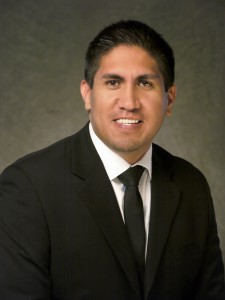 The California Wellness Foundation has spent decades treating gun violence against youth as a public health issue. In doing so, the Foundation has helped the state of California to become more progressive in its gun law policies. YouthToday spoke with Julio Marcial, Program Director of The California Wellness Foundation, about The Foundation's approach and successes.
The California Wellness Foundation has spent decades treating gun violence against youth as a public health issue. In doing so, the Foundation has helped the state of California to become more progressive in its gun law policies. YouthToday spoke with Julio Marcial, Program Director of The California Wellness Foundation, about The Foundation's approach and successes.
Tell me about The California Wellness Foundation Grantmaking Program Focused on Violence Prevention and the PreventViolence.org website.
The California Wellness Foundation has been focusing on violence prevention for the past 20 years. AndPreventviolence.org is a web portal that serves as clearinghouse on all things related to our work to reduce violence in California. For example, we have provided links to publications and other research materials to help others interested in reducing gun violence much like we did here in California.
Starting in the early ‘90s, we became the first health foundation to launch a multiyear, multimillion dollar campaign to reduce gun violence. Since 1993, we have made more than $120 million in grants to more than 700 organizations working to reduce the lethality of violence. So PreventViolence.org provides a comprehensive history about our work in the field of violence prevention, and provides information about the types of partnerships we created and information on public education campaigns we developed and launched during the past 20 years.
What has made this program successful?
When a community knows that its water and land are being poisoned by effluent from a chemical factory, or its air is being rendered foul by smokestacks, it goes after those polluters to protect the health of its people. The approach taken by the epidemiologists, public health experts and The California Wellness Foundation is the same when it came to addressing the lethality of gun violence. We began by looking at the data. We had to ask, "Where are these guns coming from? It's not like they spontaneously generated in the forest—'Oh look, a baby gun!' It was clear that there were some segments of the population where the number one cause of death was gunfire. That's a major public health problem.
Here’s what the data told us: In 1993, 5,093 people were killed as a result of gun violence in California. When you drilled down even more, we saw that more than 1,700 young people, ages 12 to 24, were killed as a result of gun violence that same year. With the help of parents, young people, researchers, law enforcement, academics, local government, and anyone else willing to lend a hand, the Foundation sought to reduce the number of young people killed by gun violence.
The Law Center to Prevent Gun Violence (formerly the Legal Community Against Violence) puts out a publication every year that grades every state as it relates to gun law policy. In 2012, California ranks number one, with some of the most progressive policies in the nation. Twenty years ago we ranked 45 or 46 in the sense of having public policies that focused on background checks for gun sales and preventing the sale of assault weapons that can carry large magazines of ammunition. The state of California has come a long way, and we are proud to be part of the vanguard that has led to a 50% decrease in gun-related homicides since 1993.
How did you reduce that number?
We took a “whatever it takes” approach. First and foremost, we looked at the data and were able to partner with a number of researchers, community-based organizations, and individuals, like our California Peace Prize honorees, to figure out when, where and how young people were being victimized. Specifically, we used state data to tell us where young people were being killed by gun violence. As a result, we focused on these “hot spots” first to figure out where guns were coming from. And we funded public policy organizations to inform policymakers and opinion leaders about gun violence prevention programs and strategies.
Since our focus was on prevention, we also had to hit rewind to keep youth out of harm’s way. The research told us that youth were more likely become a victim of gun violence after school from 3 p.m. to 6 p.m. And so with this information in hand, we funded public policy organizations to inform policymakers and opinion leaders about the need to create safe spaces after school. As a result, the California State Legislature approved legislation in 2004, which has provided more than $4 billion dollars during the past eight yeas to fund more than 1,000 after-school programs across 58 counties.
Do you feel The California Wellness Foundation’s methods could be successfully used in other states or nationwide?
Yes. And it starts with leadership. During the past 20 years, we have been fortunate to partner with elected officials at the local, county and state level, who were willing to look at gun death rates in terms of public health, not politics. There are 300 million firearms in circulation. The guns are here now. The work should be focused on preventing firearm violence. Gun sales require a background check, yet 40 percent of gun sales don’t involve one because there’s a loophole when it comes to purchasing firearms at gun shows.
In looking at the data in the early ‘90s, we noticed the most popular gun involved in homicides involving young people was the “Saturday Night Special.” These were what we called junk guns – they weren’t made well and they were cheap. The California governor at the time, Gov. Gray Davis, pushed through three important pieces of legislation, which made a big difference:
- The ban of the production and sale of the “Saturday Night Special;”
- Requiring the sale of trigger locks with all guns;
- The certification of gun show promoters, which prohibited minors from attending gun shows unless accompanied by an adult and required documentation by those who sold guns.
What kind of gun violence prevention policies do you think could help in the wake of the Newtown shootings?
Here’s what the research tells us: states with the strongest gun laws have the lowest gun death rates. Conversely, any states with the weakest gun laws have the highest death rates. I say that, but I also must be clear that more research must be done to determine the precise ratio. But it’s clear that there has to be a focus on prevention. The high rates of death related to gun violence in this country speaks for itself.
We need to have the will. This is about understanding and it requires a comprehensive approach, which should include solutions from the ground up. Here in California, we have not solved this public health crisis, but we’ve reduced it. Much like automobile safety, where we mandated seatbelts in an effort to reduce car accident related deaths. We need to create mandates in an effort to reduce gun related deaths.
Photo courtesy of The California Wellness Foundation.
